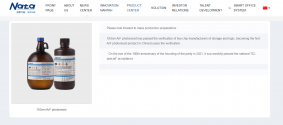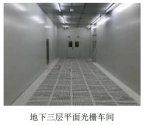View attachment 106646
Yes, laser interferometers can actually meet the manufacturing requirements of 14nm, but the performance of planar gratings is better
It seems they used an interferometer in a previous version of the machine, but now they are moving (or have already moved) to a planar grating, that BTW seems very complex to build and requires a clean-room (see the above picture by
@tonyget).
I'd suspect they moved to a planar grating,
also because advanced interferometer is foreign technology. I read somewhere that China at the moment lacks a local producer with required specs.
The important thing is that they were able to overcome this technical hurdle....if grating is expensive is not a problem. Localize the full semiconductor supply chain is infinitely more expensive, but it has to be done anyhow.
Chinese SME will run at full capacity for many years to come. It's their production capacity that will determine their market share in China, not the foreign competitors. It is already like this.
And this is even more true for SMEE: if they can produce 2 machines (as long as they work), they will deliver 2 machines, if they can produce 20 they will deliver 20.



